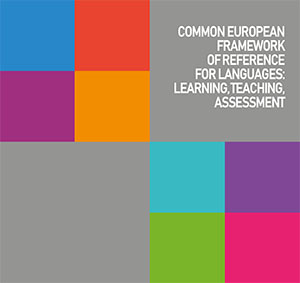Course planning
Aligning language programmes to the CEFR involves two main aspects:
- developing and reviewing the content of curricula, taking into account of the key concepts and pedagogic vision of the CEFR
- defining positive "can do" descriptors adapted to the age, interests and needs of learners and aligning these to CEFR levels and descriptors
Aligning planning, teaching and assessment within the programme is also crucial, and CEFR descriptors can help to do this (see Transparency and coherence).
A curriculum does not exist until it is enacted and it will not be enacted unless teachers are involved in its implementation from early stages. Teacher education over a period of time is crucial for the introduction or further evolution of a curriculum.
National foreign language curricula generally focus on aims and objectives and contents. These are all thoroughly described in the CEFR in a context-free scale and are relatable to any relevant context. Yet, national curricula will have to interpret the principles expressed in the CEFR relating them to local contexts and needs.
Reference Levels Descriptions (RLDs) may prove useful in course planning as they provide detailed specifications of content at the different CEFR levels for national/regional languages.
Videos
CEFR Companion volume - Curriculum - Fostering enrichment and positive impact (2018: Tim Goodier) (27:30)
Workshops
Watch How can the CEFRCV facilitate curriculum design for action-oriented, plurilingual and intercultural language education? (2023: Daniela Fasoglio) (12:50)
Using the CEFR Companion volume to enhance teacher agency in school-based language curriculum making (2022: Daniela Fasoglio)
Documents
Guide for the development and implementation of curricula for plurilingual and intercultural education (2016: Jean-Claude Beacco et al.)
The core inventory for general English (2010: Eaquals/British Council)
A "can do"-based curriculum with 18 sublevels – Info sheet (2019: Mila Angelova)
An integrated foreign languages curriculum (IFLC) – Info sheet (2019: Bessie Dendrinos & Kia Karavas)
Curriculum for a national language – undergraduate level – Info sheet (2019: Aoife Ní Ghloinn)
CEFR-based curriculum modules – Info sheet (2019: Anne Nunan)
Curriculum renewal – undergraduate level – Info sheet (2019: Jack Bower)
English for integration – EAL Framework – Info sheet (2019: Nadia Prokopchuk)
Supporting secondary school implementation – Info sheet (2019: Patricia Rose)
Web resources to support a transformation in teaching: Transforming FSL – Info sheet (2019: Government of Ontario)
Reforming teaching practice through institutionalizing the DELF – Info sheet (2019: Jennifer Adams & Denis Cousineau)
Articles
Action-oriented approach to curriculum development in CLIL courses: A theoretical and methodological framework (2021: Yuka Yamamoto & Ryo Nitta)
Innovation and reform in course planning, teaching, and assessment: The CEFR in Canada and Switzerland, A comparative study (2019: Enrica Piccardo et al.)



